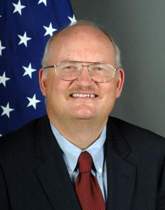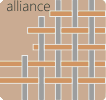 Jonathan Addleton Mission Director USAID
Jonathan Addleton Mission Director USAID
Ambassador Jonathan Addleton currently serves as USAID Mission Director to India. A five-time USAID Mission Director (India, Pakistan, Cambodia, Mongolia and Central Asia), he has also served as United States Ambassador to Mongolia, Senior Civilian Representative to Southern Afghanistan in Kandahar, and USAID Representative to the European Union in Brussels.
Earlier in his USAID career, he served as USAID Program Officer in Jordan, Yemen and South Africa. Prior to joining USAID in March 1984, he worked briefly at the World Bank, Macon Telegraph and Carnegie Endowment for International Peace.
Addleton’s articles have appeared in several publications including Asian Affairs, Asian Survey, International Migration, Mongolica, Muslim World, Ambassadors Review, Washington Post and The Foreign Service Journal. He has also written three books, Undermining the Center (Oxford University Press), Some Far and Distant Place (University of Georgia Press) and Mongolia and the United States: A Diplomatic History (Hong Kong University Press).
Addleton has received a Distinguished Honor Award and two Superior Honor Awards from USAID. In addition, he received the Christian A. Herter Award for intellectual courage and constructive dissent from the American Foreign Service Association; ISAF Service Medal from NATO; Outstanding Civilian Service Medal from the United States Army; and Polar Star, Mongolia’s highest civilian award, from the President of Mongolia.
Ambassador Addleton received a PhD from Tufts University and a Bachelor’s degree from Northwestern University. A member of the Senior Foreign Service with the rank of Career Minister, his Foreign Service languages include Hindi and Urdu. He is married to Fiona Addleton and has three adult children.
Special Remarks from Mission Director Jonathan Addleton
The United States and India have a long and successful strategic partnership in the energy sector. In 2009, our governments held a Strategic Dialogue focusing on five pillars including energy and climate change. One of the most significant outcomes of this Dialogue is our Partnership to Advance Clean Energy, or the “PACE” initiative, launched by President Obama and former Prime Minister Singh in November 2009. It remains the flagship program for clean energy between the United States and India. PACE includes three components: research, deployment, and off-grid energy access. All of these initiatives combine the efforts of several U.S. and Indian agencies.
All of these components share a key theme:
Bijilee bachaiyie, desh bardhaiyie
(Save electricity for a brighter and better India).
Under the deployment component of the PACE program, called PACE-D, USAID is the lead partner, supporting the Ministries of Power and of New and Renewable Energy to improve energy efficiency and increase the supply of renewable energy in India.
Promoting energy efficiency and scaling up renewable energy requires an effective and supportive enabling environment. To this end, USAID supports effective policy development and regulations; technological innovations; innovative financing mechanisms; and ensuring the availability of skilled human resources – be it for solar rooftops, green buildings, or a smart grid network. USAID also supports the Ministry of Power and the Bureau of Energy Efficiency on a range of related initiatives including net zero energy buildings, efficient heating, ventilation for air conditioning systems, and the Energy Conservation Building Code, or ECBC.
I would like to highlight the fact that given both current and future energy needs, it is imperative for India to go beyond incremental reductions in energy consumption in buildings by applying energy codes and standards. The need of the hour is Net Zero Energy Buildings – buildings that can reduce their energy usage by leveraging energy efficiency and supporting broader integration of renewable energy. At one point, buildings might have been the problem; now they can become the solution.
Energy efficiency in buildings has been on the agenda of successive U.S.-India energy programs since 2000. The Energy Conservation and Commercialization (ECO) bilateral program, started that year, was the first USAID program to focus on building energy efficiency in India. The Bureau of Energy Efficiency was set up under the first phase of that program to implement the Energy Conservation Act 2001. India’s first energy conservation building code, the ECBC, was prepared during ECO II. The third and last phase of the program, ECO III, focused on the states of Punjab and Gujarat.
I am very pleased to see that the legacy of the U.S.-India Energy Conservation and Commercialization (ECO) bilateral program is being carried forward by the PACE-D Technical Assistance Program. PACE-D provides technical assistance to the Bureau of Energy Efficiency to update the building energy code in response to changing market dynamics and advancements in technology. It is also supporting states such as Rajasthan and Haryana to implement efficient building codes.
Indeed, the mantra is:
Vidyat ki bachat hi vidyat ka utpadan hai!
(Every unit of power we save today will help us in ensuring a brighter and better India tomorrow).
State governments and urban local bodies play a key role, underscoring the need for states to develop specific rules and regulations to ensure compliance. It is also important to build a competent body of professionals who can design, construct, and certify buildings, another area where the project is actively involved.
I also want to congratulate Government of India for undertaking the task of promoting net zero energy buildings. More and more people today are showing interest in living in an environmentally-responsible fashion. But this will only become widespread when the buildings industry accepts this as the only way to build. This is an area where India can lead the way.
Bharat ne vishwa ko shunya (zero) diya tha, Bharat hi oojra dakshata aur akshay oorja ekeekrat bhavanon ke nirman mein vishwa ka marg darshan karega!
(India gave the number ‘zero’ to the world and India will also pave the way for future net zero energy buildings).
Bharat ke is prayas mein hum hamesha bhagidar rehein gay.
(We will always be a collaborator of India in this effort)
There is a need to bring the industry and government together to educate the public, and to drive the large-scale adoption of such buildings. To facilitate this, we have developed an NZEB knowledge portal. We are also in the process of establishing an NZEB Alliance that will facilitate industry collaboration. I encourage you all to visit the portal and to be a part of this alliance.
The PACE-D program has proposed new standards for energy efficiency and transition it towards a net zero energy building code in future. We have discussed these with experts across India through workshops in Mumbai, Kolkata, Bengaluru and Delhi. What we agree to draft today will have a huge bearing on the India that will rise tomorrow. Or, to put it another way:
Vidyut bachane mein sehyog dijiyie, desh ke vikas mein sehbagi baniyie!!
(Partner in India’s growth story by saving precious resources like electricity).
Once again, I would like to thank the Government of India, especially the Ministry of Power and the Bureau of Energy Efficiency, for their continued support and commitment to our partnership.
Chalein saath saath!!
(Forward Together we Go)
Disclaimer: Reference in this Web site to any specific commercial products, processes, or services, or the use of any trade, firm or corporation name is for the information and convenience of the site’s visitor’s, and does not constitute endorsement, recommendation, or favoring by the Ministry of Power, Government of India, or Bureau of Energy Efficiency, Ministry of Power, Government of India. Additionally, the views and opinions of authors expressed herein do not necessarily state or reflect those of the Ministry of Power, Government of India, or Bureau of Energy Efficiency, Ministry of Power, Government of India, and shall not be used for advertising or product endorsement purposes.

